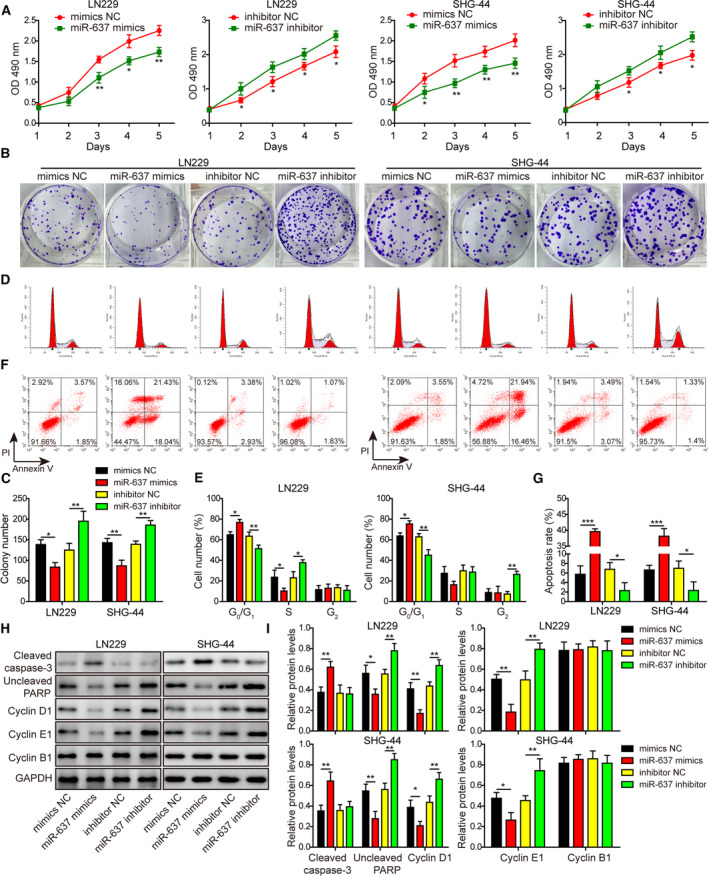Fig. 5.

MiR‐637 displayed proliferation‐related phenotypes opposite to those displayed by circEPHB4. (A) The viability of indicated LN229 or SHG‐44 cells was measured by MTT assay for 1, 2, 3, 4 and 5 days, respectively. (B,C) The long‐term proliferation of indicated cells was examined by colony‐forming assay, with representative images of colonies shown in (B) and the number of colonies in (C). (D,E) The cell‐cycle distribution of indicated cells was measured by staining the cells with PI, followed by flow cytometry. Representative images were presented in (D) and the percentages of cells in different phases of cell cycle in (E). (F,G) The apoptosis of indicated cells was measured by co‐staining the cells with Annexin V and PI, followed by flow cytometry. Representative images were presented in (F) and the percentage of Annexin V+ apoptotic cells in (G). (H,I) The expression levels of markers for apoptosis, cleaved caspase‐3 and uncleaved PARP, and markers for cell cycle progression, cyclin D1, cyclin E1 and cyclin B1, were examined by Western blotting (H) and quantified as the ratio to GAPDH (I). MiR‐637 mimics or miR‐637 inhibitor was transfected into LN229 or SHG‐44 cells to either overexpress or knockdown miR‐637. Data are presented as mean ± SD from three independent experiments. Comparison between two groups was performed using Student’s t‐test and between three or more groups using one‐way ANOVA followed by Tukey’s post hoc test. *P < 0.05, **P < 0.01 and ***P < 0.001.
